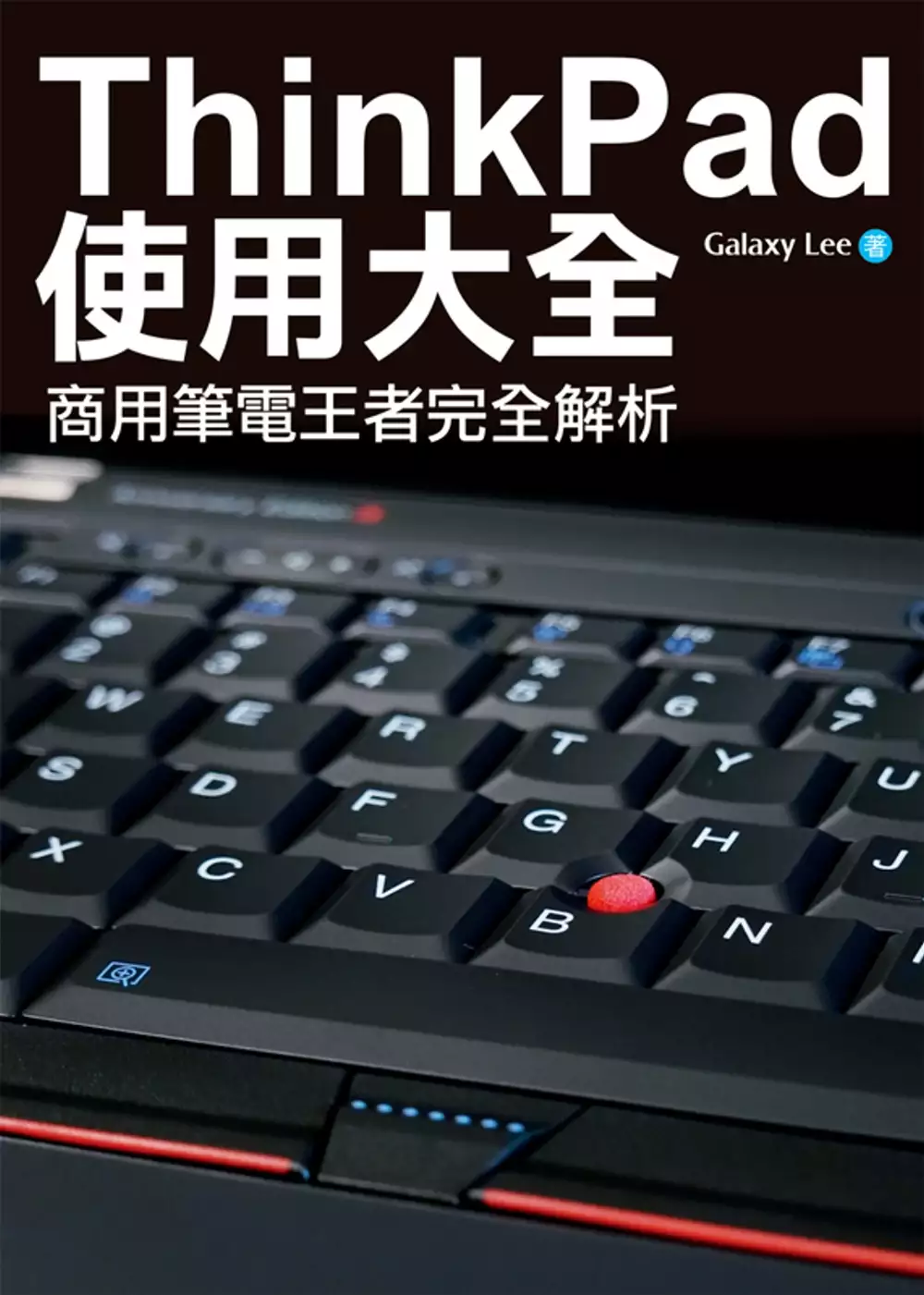3.1 gen 2的問題,我們搜遍了碩博士論文和台灣出版的書籍,推薦游峰碩寫的 從零開始的3D設計之旅:Blender 3D入門教材 和GalaxyLee的 ThinkPad使用大全:商用筆電王者完全解析都 可以從中找到所需的評價。
這兩本書分別來自博碩 和李河漢所出版 。
國立臺北科技大學 電資學院外國學生專班(iEECS) 白敦文所指導 VAIBHAV KUMAR SUNKARIA的 An Integrated Approach For Uncovering Novel DNA Methylation Biomarkers For Non-small Cell Lung Carcinoma (2022),提出 3.1 gen 2關鍵因素是什麼,來自於Lung Cancer、LUAD、LUSC、NSCLC、DNA methylation、Comorbidity Disease、Biomarkers、SCT、FOXD3、TRIM58、TAC1。
而第二篇論文中原大學 環境工程學系 游勝傑、王雅玢所指導 劉洪光的 射頻電漿改質光催化劑TiO2@g-C3N4 Z-Scheme的結構並提高可見光下對一氧化氮的降解率 (2021),提出因為有 光催化、氮氧化物、可見光、石墨碳氮化合物、二氧化鈦的重點而找出了 3.1 gen 2的解答。
從零開始的3D設計之旅:Blender 3D入門教材

為了解決 3.1 gen 2 的問題,作者游峰碩 這樣論述:
從基礎模型建構到動畫製作,全面感受3D製作高效率的設計表現 邁入Blender 3D讓人人都可以成為設計師 功能媲美商業級的3D軟體, Blender 3D以免費的方式提供給全球廣大的學習者, 並有活躍的開發者社群協助解決疑難雜症 本書是為了Blender 3D初學者所撰寫,書中內容由淺入深,循序漸進解說Blender 3D的各項功能,帶領讀者從零開始一步步地邁入3D設計的世界中。全書共分兩大部份,第1至6章為基礎教學,目的是培養學習者掌握基本的概念與操作,包括Blender 3D介面環境的了解與基本操作、3D幾何物件的操作、好用又便捷的3D物體編輯功能、幾何修
改器進階與應用的相關知識。 本書第7至12章則以單一主題來進行案例整合應用製作,並從中學習更進階的3D製作,包括古典中式涼亭設計、客廳室內設計、手機外殼設計、迷霧森林場景設計、噴霧芳香劑設計、圓頂教堂建築設計等。透過豐富的實例演練,除了熟悉設計技巧外,也加強材質、著色器、和燈光的基礎操作與應用。對於增進使用Blender 3D的經驗養成,將有大大提升的效果。 本書特色 ◎使用Blender 3D進行Low Poly物件及場景建構。 ◎學習應用貝茲(Bezier)曲線建構複雜的3D模型。 ◎運用物理修改器的布料與碰撞修改器進行創作。 ◎利用粒子系統簡化微小物件的建模,提
升開發效率。
3.1 gen 2進入發燒排行的影片
うたがくれたもの/さつきのあき(original song)
【Blog】
https://ameblo.jp/satsukinoaki/entry-12666733586.html
毎月5のつく日に更新!
YouTubeさつきのあき ちゃんねる☆
#さつきのあき #オリジナル曲 #春
☆☆☆オリジナル楽曲の配信ストア☆☆☆
Apple Music、Spotify、LINE MUSIC、 amazon music、レコチョク他、オリジナルソングのデジタル配信は下記サイトより
https://linkco.re/R2Sx1vs2
☆☆☆CDおよびBlu-rayのご購入は下記サイトより☆☆☆
さつきのあきオフィシャルサイト https://www.satsukinoaki.com/blank 振込決済
BASE さつきのあきOfficial Shop https://satsukinoaki.base.shop クレジットカード、コンビニ、キャリア決済
さつきのあき関連情報
official site ≫ http://www.satsukinoaki.com
Instagram ≫ http://instagram.com/satsukinoaki
Twitter ≫ https://twitter.com/satsukinoaki
Facebook ≫ https://www.facebook.com/satsukinoaki2015
Blog ≫ http://ameblo.jp/satsukinoaki/
Copyright © 2015-2021 satsukinoAki and BiRDS MUSIC All rights reserved.
撮影・制作環境ーーーーーーーーーーーーーーーーーーーーーーーーーーーー
[カメラ本体と関連機材]
Blackmagic Design Pocket Cinema Camera 4K https://amzn.to/303qwMP
Blackmagic Design Pocket Cinema Camera 6K https://amzn.to/2UBu9tx
BMPCC4KDCケーブルパック https://amzn.to/2Z66IXU
ライブプロダクションスイッチャー ATEM Mini Pro https://amzn.to/2LFZ0za
[レンズ]
OLYMPUS M.ZUIKO ED 12-40mm F2.8 PRO https://amzn.to/34nQNZx
OLYMPUS M.ZUIKO DIGITAL ED 12-100mm F4.0 IS PRO https://amzn.to/2SaKyTT
SIGMA 30mm F1.4 DC DN Contemporary Micro Four Thirds https://amzn.to/3pQ0Ek7
SIGMA Art 18-35mm F1.8 DC HSM キヤノン用 APS-C専用 https://amzn.to/39n4CYW
SIGMA Art 50-100mm F1.8 DC HSM キヤノン用 APS-C専用 https://amzn.to/36wOd6o
SIGMA 17-50mm F2.8 EX DC OS HSM キヤノン用 APS-C専用 https://amzn.to/2Pb2xYM
SIGMA 30mm F1.4 DC HSM キヤノン用 APS-C専用 https://amzn.to/2UM2ViK
Meike 16mm t2.2 大口径マニュアルフォーカスプライムミニシネマレンズ用マイクロフォーサーズM43
https://amzn.to/2OmLq9f
[ジンバル・スタビライザー]
DJI RS 2 Pro Combo スタビライザー https://amzn.to/2Ivif0s
[カメラケージ]
SmallRig BMPCC4K6K専用ハーフケージ https://amzn.to/306DzNu
SmallRig V-マウント 外部電源プレート https://amzn.to/2UJf7lg
[外部モニター]
ATOMOS NINJA V https://amzn.to/2Tu5h6X
ATOMOS SHINOBI https://amzn.to/2Sy3Bqb
FEELWORLD F6 Plus https://amzn.to/30v08xJ
[マイク関連]
audio-technica ステレオマイクロホン AT9946CM https://amzn.to/2HWc5pJ
Sennheiser MKE 600 ガンマイク https://amzn.to/2HMIoHo
sE Electronics sE2200 単一指向性コンデンサーマイク https://amzn.to/3rM6HrL
sE Electronics RF-X リフレクション・フィルター 軽量化 https://amzn.to/3n7C2BD
Gravity グラビティ マイクスタンド ストレート 丸ベース ブラック GMS23B https://amzn.to/2MmTtRM
[ストレージ]
Delkin 1TB Juggler USB 3.1 Gen 2 Type-C Cinema SSD https://amzn.to/2UButsf
Samsung 外付けSSD T5 500GB https://amzn.to/2YSO5LW
[オーディオインターフェース]
Roland DUO-CAPTURE EX https://amzn.to/2u9Kzug
ZOOM オーディオインターフェイス TAC-2 https://amzn.to/2v6orpg
YAMAHA 6チャンネルミキシングコンソール MG06X https://amzn.to/2ZeSGaa
[編集ソフト]
Ableton Live 10 Lite
Blackmagicdesign DaVinci Resolve
Apple Final Cut Pro X
Adobe Photoshop https://amzn.to/2udxUqe
ーーーーーーーーーーーーーーーーーーーーーーーーーーーーーーーーーーー
An Integrated Approach For Uncovering Novel DNA Methylation Biomarkers For Non-small Cell Lung Carcinoma
為了解決 3.1 gen 2 的問題,作者VAIBHAV KUMAR SUNKARIA 這樣論述:
Introduction - Lung cancer is one of primal and ubiquitous cause of cancer related fatalities in the world. Leading cause of these fatalities is non-small cell lung cancer (NSCLC) with a proportion of 85%. The major subtypes of NSCLC are Lung Adenocarcinoma (LUAD) and Lung Small Cell Carcinoma (LUS
C). Early-stage surgical detection and removal of tumor offers a favorable prognosis and better survival rates. However, a major portion of 75% subjects have stage III/IV at the time of diagnosis and despite advanced major developments in oncology survival rates remain poor. Carcinogens produce wide
spread DNA methylation changes within cells. These changes are characterized by globally hyper or hypo methylated regions around CpG islands, many of these changes occur early in tumorigenesis and are highly prevalent across a tumor type.Structure - This research work took advantage of publicly avai
lable methylation profiling resources and relevant comorbidities for lung cancer patients extracted from meta-analysis of scientific review and journal available at PubMed and CNKI search which were combined systematically to explore effective DNA methylation markers for NSCLC. We also tried to iden
tify common CpG loci between Caucasian, Black and Asian racial groups for identifying ubiquitous candidate genes thoroughly. Statistical analysis and GO ontology were also conducted to explore associated novel biomarkers. These novel findings could facilitate design of accurate diagnostic panel for
practical clinical relevance.Methodology - DNA methylation profiles were extracted from TCGA for 418 LUAD and 370 LUSC tissue samples from patients compared with 32 and 42 non-malignant ones respectively. Standard pipeline was conducted to discover significant differentially methylated sites as prim
ary biomarkers. Secondary biomarkers were extracted by incorporating genes associated with comorbidities from meta-analysis of research articles. Concordant candidates were utilized for NSCLC relevant biomarker candidates. Gene ontology annotations were used to calculate gene-pair distance matrix fo
r all candidate biomarkers. Clustering algorithms were utilized to categorize candidate genes into different functional groups using the gene distance matrix. There were 35 CpG loci identified by comparing TCGA training cohort with GEO testing cohort from these functional groups, and 4 gene-based pa
nel was devised after finding highly discriminatory diagnostic panel through combinatorial validation of each functional cluster.Results – To evaluate the gene panel for NSCLC, the methylation levels of SCT(Secritin), FOXD3(Forkhead Box D3), TRIM58(Tripartite Motif Containing 58) and TAC1(Tachikinin
1) were tested. Individually each gene showed significant methylation difference between LUAD and LUSC training cohort. Combined 4-gene panel AUC, sensitivity/specificity were evaluated with 0.9596, 90.43%/100% in LUAD; 0.949, 86.95%/98.21% in LUSC TCGA training cohort; 0.94, 85.92%/97.37 in GEO 66
836; 0.91,89.17%/100% in GEO 83842 smokers; 0.948, 91.67%/100% in GEO83842 non-smokers independent testing cohort. Our study validates SCT, FOXD3, TRIM58 and TAC1 based gene panel has great potential in early recognition of NSCLC undetermined lung nodules. The findings can yield universally accurate
and robust markers facilitating early diagnosis and rapid severity examination.
ThinkPad使用大全:商用筆電王者完全解析

為了解決 3.1 gen 2 的問題,作者GalaxyLee 這樣論述:
全球百科級ThinkPad專書,搞懂商用筆電王者,一本就通! ◎取材自歷次參訪ThinkPad日本研發中心(Yamato Lab),詳細揭露ThinkPad三大硬體特色與設計哲學。 ◎全彩圖文介紹平時較難接觸的原廠各式周邊裝置實機,深入活用ThinkPad專屬周邊。 ◎ThinkPad BIOS與專屬軟體完整介紹,鉅細靡遺,深入淺出,徹底發揮主機實力。 ★藉由本書,除了清楚硬軟體規格面的資訊,更能對Yamato Lab設計ThinkPad時所在意的機構、鍵盤、散熱這三大設計,有更深一步的體會。 由ThinkPad非官方情報站站長撰寫,全書共九大章節,涵蓋Think
Pad主機、原廠周邊、專屬軟體,全球百科級ThinkPad專書。 針對橫跨2018~2020年主流機種詳細介紹硬體諸元,新機採購不再鴨子聽雷,同時提供超完整功能說明。 深入介紹商用筆電王者:ThinkPad的軟硬體功能、特色及周邊設備,適合採購參考、後續操作指南以及進一步學習進階使用方法。
射頻電漿改質光催化劑TiO2@g-C3N4 Z-Scheme的結構並提高可見光下對一氧化氮的降解率
為了解決 3.1 gen 2 的問題,作者劉洪光 這樣論述:
本研究以商業二氧化鈦(TiO2)和尿素使用一步驟熱裂解法, 成功地產出 TiO2@gC3N4 異質接面複合材料,本研究嘗試研究此複合材料在可見光下對一氧化氮( NO)的降解光催化性能。 研究採用漫反射光譜法( DRS)來評估所選材料的光吸收和能隙, 以證明材料在可見光下具有明顯的光催化活性。在可見光照明下, 於玻璃、薄膜和薄膜基材上的 NO 光降解效率分別約為 90.14%、 87.77%和84.50%。為了評估光催化過程中 NO 的轉化途徑, 研究中計算副產品和二氧化氮( NO2)的生成。此外, TiO2@g-C3N4 複合材料在五次重複使用性測試後, 表現出良好的穩定性,重複使用後其效能
下降幅度小於 10%。 另外研究應用高解像能電子顯微鏡( HR-TEM)圖片和 X 射線光電子能譜儀( XPS) 來檢查材料的形態和化學組成,以及使用拉曼光譜儀檢測材料的結構振動。 TiO2@g-C3N4複合材料的光催化過程也通過電子自旋共振( ESR)和誘捕研究進行分析研究, 結果顯示超氧陰離子於去除 NO 方面發揮了重要作用。